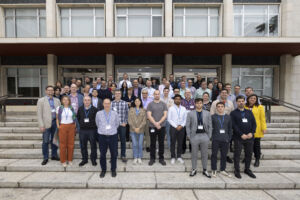

Fission and Fusion
In a nutshell
The main objectives of INNUMAT are to develop innovative structural materials for nuclear applications and put them on track towards qualification for fission lead-cooled and molten salt fast reactors as well as fusion DEMO. For fission applications high entropy alloys (HEAs), a new class of materials with a vast development potential and very promising properties1, as well as alumina forming austenitic (AFA) steels, already identified as prospective structural materials for Gen IV and Small Modular Reactors2, are in the main focus in which advanced material solutions for fission and fusion applications are considered as well, in particular weld overlay and coated 15-15Ti for lead-cooled fast reactors (LFR), among others MYRRHA and ALFRED, and coated Eurofer and advanced oxide dispersion strengthened (ODS) steel for fusion DEMO. Some of these structural materials are of potential applicability also outside the nuclear field, e.g. HEAs and AFA steels in concentrated solar power (CSP) and coated steels in H2 confinement and CSP. The project is thus cross-cutting in nature because of the target applications, as well as because of the accelerated methodologies for materials discovery, screening and qualification that it pursues, applied at different technology readiness levels (TRLs).
To achieve the objectives and ambitions pursued by the different research tracks a work package structure is devised
to cover the entire route generally required to develop a new structural material and to qualify it for a desired nuclear application, starting with a high-throughput development process, over to extensive characterization of the material behaviour under application relevant conditions, and through to fast qualification procedure considering nuclear codes and standards
IMPACT
The optimisation and improvement of existing materials in terms of radiation, temperature and corrosion resistance is thus the obvious path to be followed in R&D actions oriented to concretely impact the performance of next generation nuclear systems, with all their socio-economic implications, as well as of non-nuclear systems with similar high temperature requirements. The European Commission estimates that 70% of product innovation across all industries is derived from new or improved materials.
Along the TRL scale, starting from the low side, INNUMAT addresses, for the first time in a European project dedicated to nuclear materials, high entropy, or complex composition, alloys (HEA/CCA). HEAs are still in an early development stage, but they have already shown the ability to overcome some of the inherent problems of existing alloys. By exploring different ranges of concentrations in the HEA domain
it should be eventually possible to develop materials that are simultaneously less susceptible to swelling and irradiation-assisted stress corrosion cracking than austenitic stainless steels, and resistant to radiation-induced phase transformation and segregation (RIS), thereby leading to mitigation of embrittlement.
WP1
WP1 will: 1)provide the REFERENCE materials (task 1.1) for all tracks, to be studied in all other technical WPs (WP2, WP3, WP4 and WP5). These materials may be purchased, in-kind provided or produced by the Partners.
2. Design and develop NEW improved materials (tasks 1.2 and 1.3). This objective concerns the HEA and “coated
materials” (Eurofer, 15-15Ti) tracks. Materials will be furnished after validation (structure and properties), in agreementwith the specifications from Partners. Through Tasks 1.2 and 1.3, WP1 will contribute to the transversal objective ofINNUMAT: Development of a comprehensive modelling approach for the design of alloys for nuclear applications.
WP2
WP2 goals are to:
Explore the compatibility of advanced materials in the environment of different nuclear installations (LFR, MSR, fusion) and evaluate the degradation of mechanical properties in contact with liquid metals (Pb, PbBi, PbLi)
- Assess underlying corrosion phenomena, including their local initiation, by modelling and validate model predictions
- Evaluate cross cutting effects for different coolants and conditions and potential links to renewable energies (CSP)
WP3
The objective of the WP3 is to evaluate the mechanical behaviour and thermal stability at high temperature of the new materials/solutions produced in WP1 by a combination of experiments (conventional and advanced) and modelling activities:
- Design relevant data to feed qualification
- Evaluate thermal stability, by means of advance microstructural and mechanical characterization
- Select screening methods and modelling tools, in view of materials qualification.
WP4
Data on radiation tolerance are necessary to increase TRL for nuclear application and fast track pathway to qualification.
The objective of WP4 is to assess the radiation stability and radiation resistance at high temperature of all material solutions by a combination of ion-irradiation programmes, an irradiation campaign in the BR2 reactor, PIE using the SSTT, microstructure characterization and modelling activities.
WP5
The ultimate goal of this work package is to show and evaluate pathways for the qualification of new innovative materials concepts for Gen IV and fusion reactors. Therefore, the demands of the different reactor concepts will be identified and mapped in order to develop optimized testing programmes and formalize them in a qualification road map(s), including fabrication processes). Special attention will be paid to the usability of subsized and miniaturized sample testing techniques for screening and (if applicable) qualification and design data. Their potential towards the acceleration of the (innovative) materials qualification will be evaluated as well. While WP5 does not include an extensive testing program specialized, specialized (neutron scattering) and well targeted (small punch tests) tests will be conducted in order to support and verify the given statements and recommendations.
WP6
The ultimate objective of this WP is to enhance the potential of exploitation of the results of the project, by seeking for and strengthening the synergy in terms of innovative materials between fission, fusion and nonnuclear applications. This will be achieved by creating Advisory Groups that should act as advisory body for the project, as well as by defining in detail the exploitation paths of the various materials tracks addressed within the project. Moreover, these objectives will be achieved by organizing dedicated expert workshops or webinars in order to create awareness in the nuclear community of materials science and technology developments in nonnuclear fields relevant to it, and vice-versa.
WP7
WP7 aims at ensuring adequate strategies to promote the impact of the INNUMAT project and disseminate findings and information generated. In particular, the objectives are:
- develop and implement a communication and dissemination strategy targeting selected audiences
- highlight the European dimension of the project and the tangible benefits of developing innovative structural materials with potential applicability outside the nuclear field
- support the knowledge transfer to stakeholders and foster education and training
- promoting open science practices and effective and transparent data managememt
WP8
- Ensure the correct and timely execution of the INNUMAT work plan including possible changes that may occur during the project.
- Guarantee efficient and transparent communication within the consortium and with the EC.
- Assure the overall coordination of all activities among the project partners.
- Enable timely reporting to the European Commission.
- Coordinate the administrative and financial management of the project.
 KARLSRUHER INSTITUT FUER TECHNOLOGIE – DE
KARLSRUHER INSTITUT FUER TECHNOLOGIE – DE
 ANSALDO NUCLEARE SPA- IT
ANSALDO NUCLEARE SPA- IT
![]() CENTRO DE INVESTIGACIONES ENERGETICAS, MEDIOAMBIENTALES Y TECNOLOGICAS-CIEMAT -ES
CENTRO DE INVESTIGACIONES ENERGETICAS, MEDIOAMBIENTALES Y TECNOLOGICAS-CIEMAT -ES
 INSTITUT MINES-TELECOM -FR
INSTITUT MINES-TELECOM -FR
![]() FRAMATOME -FR
FRAMATOME -FR
![]() AGENCIA ESTATAL CONSEJO SUPERIOR DE INVESTIGACIONES CIENTIFICAS -ES
AGENCIA ESTATAL CONSEJO SUPERIOR DE INVESTIGACIONES CIENTIFICAS -ES
STUDIECENTRUM VOOR KERNENERGIE / CENTRE D’ETUDE DE L’ENERGIE NUCLEAIRE -BE
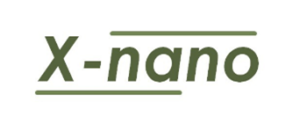 X-NANO SRL – IT
X-NANO SRL – IT
 COMMISSARIAT A L ENERGIE ATOMIQUE ET AUX ENERGIES ALTERNATIVES – FR
COMMISSARIAT A L ENERGIE ATOMIQUE ET AUX ENERGIES ALTERNATIVES – FR
 KUNGLIGA TEKNISKA HOEGSKOLAN – SE
KUNGLIGA TEKNISKA HOEGSKOLAN – SE
 CENTRUM VYZKUMU REZ SRO – CZ
CENTRUM VYZKUMU REZ SRO – CZ
 INSTITUTUL NATIONAL DE CERCETARE DEZVOLTARE PENTRU FIZICA MATERIALELOR -RO
INSTITUTUL NATIONAL DE CERCETARE DEZVOLTARE PENTRU FIZICA MATERIALELOR -RO
FRAUNHOFER GESELLSCHAFT ZUR FOERDERUNG DER ANGEWANDTEN FORSCHUNG E.V. -DE
 REGIA AUTONOMA TEHNOLOGII PENTRU ENERGIA NUCLEARA – RATEN -RO
REGIA AUTONOMA TEHNOLOGII PENTRU ENERGIA NUCLEARA – RATEN -RO
 ENERGIATUDOMANYI KUTATOKOZPONT -HU
ENERGIATUDOMANYI KUTATOKOZPONT -HU
 SINTEC SRL -IT
SINTEC SRL -IT
 POLITECHNIKA WARSZAWSKA -PL
POLITECHNIKA WARSZAWSKA -PL
 CENTRE NATIONAL DE LA RECHERCHE SCIENTIFIQUE CNRS -FR
CENTRE NATIONAL DE LA RECHERCHE SCIENTIFIQUE CNRS -FR
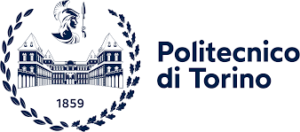 POLITECNICO DI TORINO -IT
POLITECNICO DI TORINO -IT
![]() NARODOWE CENTRUM BADAN JADROWYCH -PL
NARODOWE CENTRUM BADAN JADROWYCH -PL
 SLOVENSKA TECHNICKA UNIVERZITA V BRATISLAVE -SK
SLOVENSKA TECHNICKA UNIVERZITA V BRATISLAVE -SK
AGENZIA NAZIONALE PER LE NUOVE TECNOLOGIE, L’ENERGIA E LO SVILUPPO ECONOMICO SOSTENIBILE -IT
![]() ELECTRICITE DE FRANCE -FR
ELECTRICITE DE FRANCE -FR
![]() HELSINGIN YLIOPISTO -FI
HELSINGIN YLIOPISTO -FI
 TEKNOLOGIAN TUTKIMUSKESKUS VTT OY -FI
TEKNOLOGIAN TUTKIMUSKESKUS VTT OY -FI
 NATIONAL SCIENCE CENTER KHARKOV INSTITUTE OF PHYSICS AND TECHNOLOGY -UA
NATIONAL SCIENCE CENTER KHARKOV INSTITUTE OF PHYSICS AND TECHNOLOGY -UA
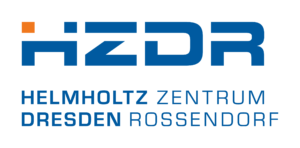 HELMHOLTZ-ZENTRUM DRESDEN-ROSSENDORF EV -DE
HELMHOLTZ-ZENTRUM DRESDEN-ROSSENDORF EV -DE
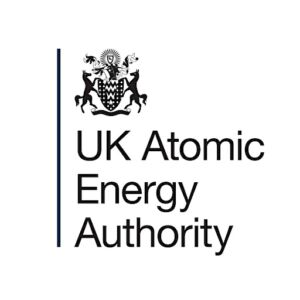 UNITED KINGDOM ATOMIC ENERGY AUTHORITY -UK
UNITED KINGDOM ATOMIC ENERGY AUTHORITY -UK
 JRC – JOINT RESEARCH CENTRE – EUROPEAN COMMISSION -BE
JRC – JOINT RESEARCH CENTRE – EUROPEAN COMMISSION -BE
 PAUL SCHERRER INSTITUT -CH
PAUL SCHERRER INSTITUT -CH
![]() BANGOR UNIVERSITY -UK
BANGOR UNIVERSITY -UK


